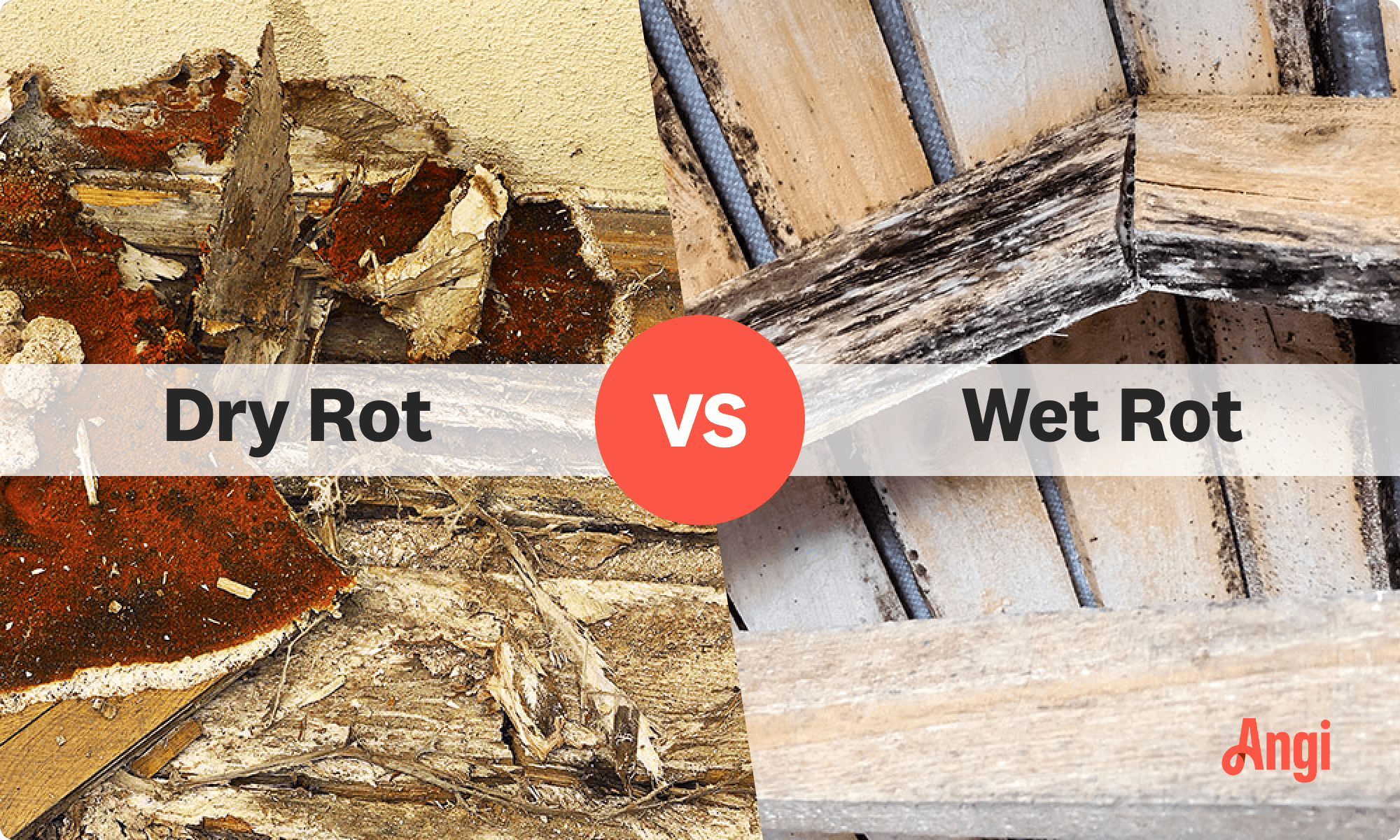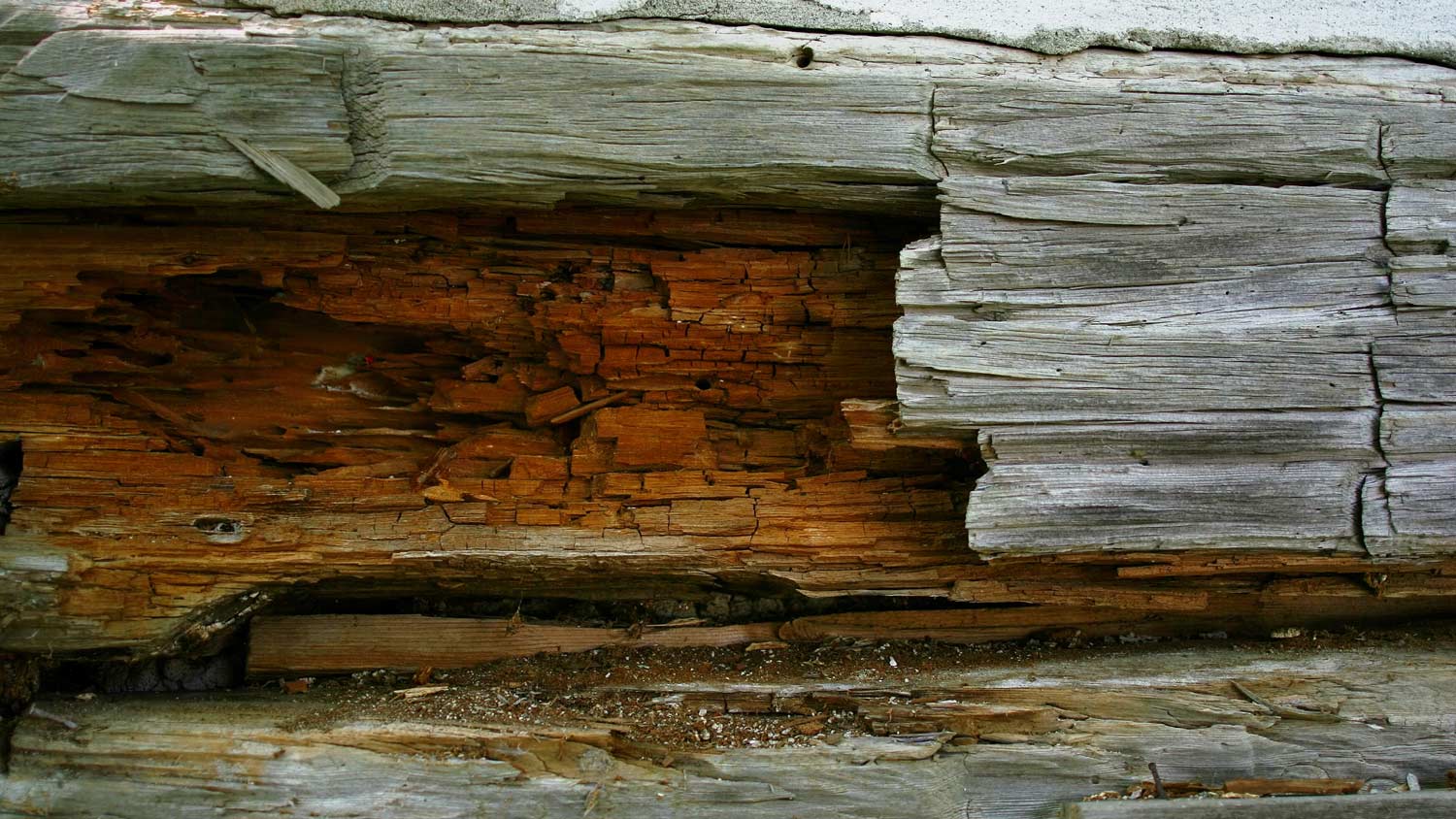
Fire hydrant costs might not be an expense you think about day-to-day, but they’re important to consider for the safety of your home.
Here’s what you need to know to spot (and stop) the rot


Dry rot is caused by a fungus that spreads from trees and untreated timber via spores.
Dry rot will create a brittle texture and damaged surfaces on your wood, and it can lead to discoloration.
Dry rot will only appear on damp wood, so treating the underlying moisture issue is the best way to prevent it.
It’s possible to repair dry rot, although the work can be expensive, depending on the extent of the damage.
There aren't many things sturdier than wood, but that doesn't mean this beloved building material is invincible. When wood comes in contact with water or moisture for extended periods, it may still fall victim to issues like dry rot. Dry rot is a byproduct of a specific fungus that can transfer from the trees outside to the wood in your home via airborne spores.
But what does dry rot look like, and how do you tell the difference between it and other wood ailments like wet rot? In this guide, we’ll explain how to spot, treat, and prevent dry rot and what can happen if you wait too long to fix the problem.

Dry rot looks like damaged or rotted wood, and you’ll often see orange discoloration on the surface. You may notice holes or large divots forming on the surface, peeling wood, and other signs of deterioration. Dry rot appears on wood that’s exposed to moisture for prolonged periods, so you may also notice that affected wood is darker in color than surrounding pieces or that moss and other plant growth is taking place on the wood.
Unlike termite damage—which will hollow wood but won’t always alter the visible texture—dry rot makes timber look brittle and weak. You may notice holes in the wood, surface damage, chipping, or peeling as a result. If you’re not sure how to tell if your problem is dry rot—or something else like black or white mold, place the tip of a screwdriver on an affected area and gently apply pressure. If the wood punctures easily and then crumbles into small, cube-like sawdust afterward, you’ve got dry rot on your hands.
Changing colors is another feature of dry rot that you won’t find with wet rot. A dusty, orange color is the most common one you’ll get, but this fungus has also been known to produce shades like white, brown, and light or dark purple. By contrast, wet rot will darken wood, but it won’t produce a drastic color change.
A wet, mildewy odor accompanies wet rot, but dry rot’s odor is much more unique, with notes of earth and a mushroom-like smell.
Speaking of mushrooms, they’ve been known to pop up in severe cases of dry rot. What you’re more likely to find, especially in the early stages, is a fungal growth resembling a white film—it’s like a spider web but stickier, thicker, and often in places you’d never catch a spider.

Wet and dry rot often get lumped together, and while there are some similarities, the underlying cause is a bit different. Wet rot is a result of mold after water damage, where moisture levels remain high after the initial exposure. Dry rot, on the other hand, will only form on moist wood, but once the infection begins, it can spread through dry wood.
Dry rot is directly linked to a fungus called Serpula lacrymans, which can form on wood outdoors and track its way into your house without proper preventative measures in place. And it doesn’t only affect wood. If not spotted soon enough, it can spread to and infect your home at large—even the parts that aren’t made from lumber.
Here are all the ways this fungus can sneak into your home.
The dry rot fungus is naturally found in densely wooded areas like forests, which means your home has a higher risk of becoming infected if you live in such an environment. What’s worse, fruiting mushrooms from the fungus release spores that are carried by the air through windows and any unsealed cracks or gaps in your home, despite your best efforts.
Bringing untreated timber into a home is the fastest way to infect it accidentally with dry rot. Even if the wood itself doesn’t appear infected, there’s still a chance it could be carrying spores with it.
Dry rot spores can remain dormant until activated—which means that they can be lying in wait in older homes that were built with untreated wood. If you suspect that this is the reason for your wood woes, hire a contractor near you to assess how deep the damage goes. They’ll be able to tell you whether the problem will be an easy fix or if it will require a complete structural overhaul.
Although dry rot can activate at temperatures as low as 37 degrees Fahrenheit, it tends to prefer warmer conditions of 68 to 79 degrees Fahrenheit.
Though the terms are used interchangeably, wood rot and dry rot have different meanings. Wood root is a broad term that describes various types of fungal decay in wood, while dry rot is a specific type of wood rot caused by the fungus Serpula lacrymans. Dry rot can thrive at a low moisture level and spread rapidly across plaster and even masonry to infect new areas of wood.
The best way to stop wood from rotting is to keep it dry. Dry rot and wet rot will only affect wood that gets wet or has a high moisture content, so maintaining a dry environment in your home through the use of dehumidifiers is ideal. If you ever experience water damage in your home from a flood or leaking pipe, hire a water damage restoration company near you immediately to dry everything out and begin repairs. This will mitigate the risk of dry rot setting in.
If you already have a dry rot infection, you can take a few steps to remove it and stop its spread.
Treat early infections with fungicide: If the dry rot is still relatively contained, use a fungicide with borate to stop it in its tracks.
Remove and replace infected wood: You’ll need to remove wood that’s past the point of no return as quickly as possible to avoid contaminating the rest of your home.
Hire a specialist: Extensive rot is a problem that requires help from a professional. For minor issues on decorative wood, call a local handyman service. For more extensive problems or dry rot on structural components, contact a water damage pro who fixes wood rot.
From average costs to expert advice, get all the answers you need to get your job done.

Fire hydrant costs might not be an expense you think about day-to-day, but they’re important to consider for the safety of your home.

Ozone treatment can help with lingering smoke odors. Learn about ozone smoke removal costs to get an accurate idea of how to budget for this service.

Fixing a slab leak requires finding the leak, digging a trench, breaking the slab, pipe lining, and more. Keep reading to learn how to fix a slab leak.

Has your area been affected by flooding? Use this water damage restoration checklist to help save your home and protect your belongings.

The fire damage restoration process includes damage assessment, cleanup, and restoration. Learn more about each step of the process in this guide.

Buying a house in a flood zone can pose a risk, but it’s not always a bad idea. Check out our tips to make sure you stay protected when moving.